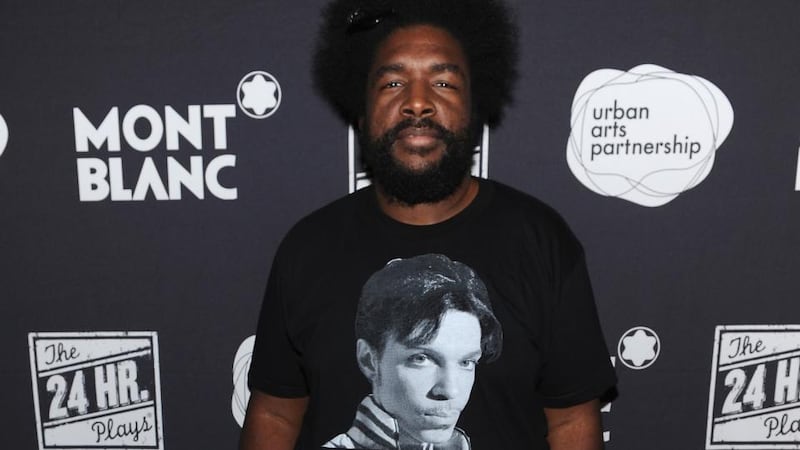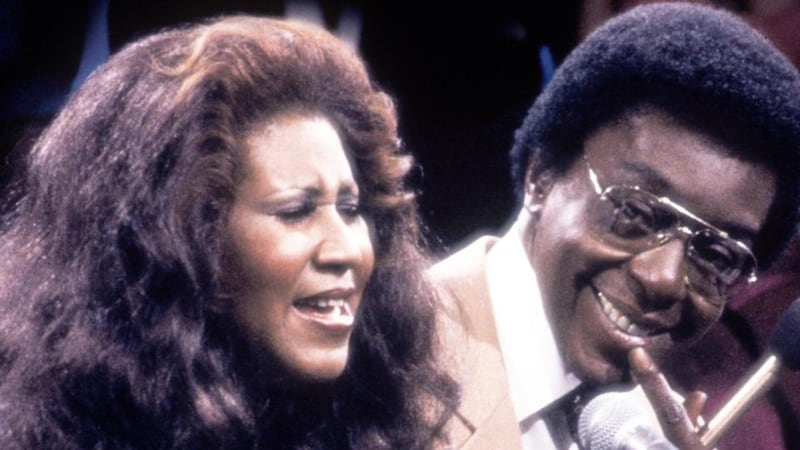It's time for Soul Train to leave the station again. The classic US black music show introduced TV audiences to a host of r'n'b, soul and hip-hop acts and produced memorable performances from acts including Run DMC, Aretha Franklin, James Brown, Michael Jackson, Tina Turner, Stevie Wonder, Whitney Houston, LL Cool J and hundreds of others. The series may have ended in 2006, but interest in the show has not abated.
Ahmir "Questlove" Thompson is Soul Train's most famous fan. The drummer for The Roots and band-leader eulogised the show in his recent Mo' Meta Blues autobiography, has talked about it repeatedly in interviews and hosts a weekly club called Bowl Train at New York's Brooklyn Bowl in its honour, even screening Soul Train videos at the venue.
So he was first in the queue when the time came to produce a book on the show and its charismatic founder and presenter Don Cornelius. It's worth noting that there was indeed a queue: noted black music historian and critic Nelson George's book on the show, The Hippest Trip in America, is due for publication later this year.


Thompson calls Soul Train: The Music, Dance and Style of a Generation a "passion project" and it's certainly a lavish homage to the show and a gorgeously produced celebration of a time, place and scene. There are hundreds of photos of the larger- than-life characters who defined it, including Cornelius, the musicians and, the real star turns, the dancers in the audience.
The show began in 1970 when Cornelius, a news and sports reporter, was hired by a Chicago TV station. On the side, he was promoting record hops called Soul Train at high schools, and the station asked him to bring his roadshow to TV.
The following year, the show went national thanks to a sponsor, the Johnson Products Company, which produced a line of haircare products it wanted to market to African-Americans. Very quickly, Soul Train relocated to Los Angeles, the audience multiplied and a generation of kids were entranced by what they saw.
One of those kids was Thompson. He can recall walking into his living room at home in Philadelphia and seeing Curtis Mayfield performing Freddie's Dead on the show. Soul Train was the only show his strict parents would allow him to watch, bar Sesame Street.
It wasn't just the acts who caught his imagination, but also the style, vibe and politics. Thompson provides a deeply informed narrative and context about what Soul Train did for black music, black America and, along the way, American TV, making for much more than a colourful coffee table book.
Diversity and magic
At the heart of the story is Cornelius, a man Thompson considers to be "the most crucial non-political figure to emerge from the civil rights era post-1968 alongside Berry Gordy". What the presenter and show did was put a different spin on how the US mainstream saw black American culture. Instead of associating black Americans on TV with crime, riots and trouble, Soul Train showed the colour, spirit, verve, diversity and magic of not just musicians, but also their fan bases.
The first decade saw most of the big names in soul and funk – from Al Green, Aretha Franklin and Gladys Knight to James Brown and the Jackson 5 – turning up on screen. It wasn't just the music that was perfectly tailored to the audience: the show explicitly endorsed products for black Americans during ad breaks.
It meant that Soul Train represented "the first time many people had ever seen black Americans at the centre of an entertainment television show". It provided Madison Avenue with "some of the first opportunities to buy television advertising and create ads targeting the African-American audience."
For Thompson, the show really hit its stride from 1984 to 1988, when it was dominated by Prince and Michael Jackson. This was also when hip-hop began its rise. This clearly excited Thompson, although Cornelius found hip-hop baffling, if not off-putting. But while Cornelius was old-school in his musical tastes, he was very modern when it came to business. This was what the kids wanted, so it is what Soul Train became.
Broadening appeal
During these years, Soul Train went from a show primarily focused on black music and a black audience to something broader. Cornelius brought in synth-driven pop such as the Pet Shop Boys, A-ha and Duran Duran, and a number of white American acts with various degrees of r'n'b influence such as Hall & Oates and the Doobie Brothers. Ads became more homogenised, and scantily clad female dancers got more air time.
Moving into the 1990s, the show functioned as "an utopian clubhouse for every ethnic group with a common love of rhythmic expression". It featured performances from r'n'b producers such as Babyface and Teddy Riley, plus more and more rappers and future pop stars such as Usher, Lenny Kravitz and Mariah Carey
By then, the rise of MTV meant the show no longer had a unique selling point, while the growth of the music-industry complex meant labels seeking to promote their acts had more than Soul Train to target.
Cornelius stepped down as host in 1993, and, although the show kept going under different hosts, Soul Train and Cornelius are inextricably intertwined.
Thompson is keen to talk up the radical agenda that Cornelius pushed to carve out space on TV for black Americans. He notes, however, that this didn't fix the disparity in television representation. For instance, the actor Kerry Washington from the show Scandal was the first African-American female lead in a network drama in almost 40 years.
The one before Washington? "Teresa Graves, " writes Thompson, an "undercover cop in Get Christie Love! , which had its debut in 1974", three years after Soul Train began to broadcast across the US. The task Cornelius and his show began, advancing the lot of black Americans on television, is far from done.
The joy here is reading a superfan pay tribute to his heroes and write as only a fan can about the loose ends and connections of a great show. For many, the hippest trip in America never ends.
Soul Train: The Music, Dance, and Style of a Generation, by Questlove, €42.99
MUSIC ON IRISH TELLY: PAST, PRESENT AND FUTURE
When it comes to Irish television's dalliance with music shows, there's a long list of titles gathering dust in the archives. MT USA is probably the leader of the pack, the Sunday afternoon show hosted by Vincent Hanley from various street corners in New York. It ran from 1984 to 1987, with a steady diet of videos from ZZ Top, Cyndi Lauper, Men Without Hats and Dennis DeYoung.
Then, there was Megamix, presented by Flo McSweeney and Kevin Sharkey from the Cathedral Club in Dublin with live performances and videos.
Along the way, music on our small screens has come from shows such as No Disco, The Beatbox, The Last Broadcast, Pop on 3, The Sound Room, When Under Ether, Dynamite TV, Night Shift, Pop Scene, TV Gaga and Rianta.
Currently, the handful of dedicated music shows are largely confined to the witching hours.
Terrestrial TV bosses firmly believe that the audience for music TV shows has gone online and to 24/7 music channels, so shows such as Other Voices and Ceol ar an Imeall are scheduled for the graveyard shift.
It's a situation that is unlikely to change. As with Soul Train, the heyday for the big catch-all music shows seems to be over. While music may be everywhere on our screens, from the chat shows to talent shows, there ironically seems to be less and less time and space available for a show purely about music.
The future for Irish music shows may well be online, where there is less pressure to create hits and potentially a bigger audience because of the international reach.











